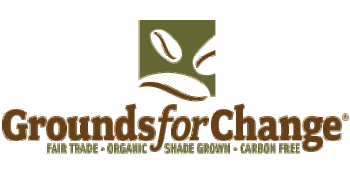If you drink coffee, you’ve probably heard the words “fair trade” and “direct trade.” Both seek to protect farmers from predatory corporations and work with farmers to develop partnerships that benefit both stakeholders. So, what’s the difference?
What is Fair Trade?
The fair trade movement has grown in demand over the decades—the most obvious sign being the development of multiple fair trade organizations. Fairtrade certifications promise that their producers receive and give their workers a living wage, supply chains are ethical, and labor laws are followed. Fairtrade International and Fair Trade USA are two of the largest and more global fairtrade standards. The biggest difference between fair trade certifications is who they are willing to certify. Fairtrade International only certifies organized farmers, while Fair Trade USA will also certify plantations under the rationale that more fair trade products will be available on the market.
Likewise, certified fair trade coffee follows a set of standards that account for environmentally sustainable practices on the property, ethical business strategies, and living wages for producers and their workers. Every farm must reach these highly regulated standards despite the challenges of their region to be certified fair trade. Additionally, fair trade employs farmer co-ops, which establishes a farming community, gives their members democratic voices in decision-making, and ensures that a fairtrade certification is benefiting many. For fair trade, this means larger quantities of coffee beans are sold to exporters and wholesalers.
In exchange, fair trade organizations have set prices for commodities to help protect farmers against fluctuations in the market. If a farmer experiences a poor harvest season, their families and workers will not suffer the economic consequences for a cause beyond their control. And when the season goes well and there is an excess of profits, those funds are invested in the community to build schools, hospitals, and other projects for community development. Although fair trade offers a minimum price for a commodity, it’s not necessarily equivalent to a living wage, especially if the supply chain is cloudy; in response, Fairtrade International is reevaluating their pricing structure to see how they can better support farmers.
Fair trade’s efforts have improved the lives of millions of farmers and their families around the world. However, what fair trade lacks is a standard for coffee bean quality.
What is Direct Trade?
Direct trade is direct because roasters want to ensure that the beans they purchase maintain a consistent quality—by building a partnership, roasters can hold farmers accountable to their standards year after year. This typically manifests as a representative from the roasters meeting with a representative of the farm to communicate this need and develop a relationship. Some direct trade roasters pay coffee farmers well for their high-quality beans; however, this is very dependent on the individual coffee company.
Direct trade roasters also can identify exactly how their relationship is impacting their partner farmers and the surrounding community. Roasters can market this to their customers and illustrate the tangible impacts their partnership creates. In this way, direct trade is much more personal, particularly if the roaster has the chance to experience the farm and get to know the farmer’s family. However, this usually means smaller batches of beans since they will only be used by the single roaster.
Besides flavor, one of the biggest differences between fair and direct trade is with whom they trade. While there are many benefits to a co-op, it also means that fair trade farmers may not necessarily know who is consuming the coffee beverage made from their beans; this may mean they don’t prioritize a consistent bean quality. Since direct trade partnerships are on an individual farmer to coffee company basis, the roaster determines if the quality meets their criteria year after year.
The biggest criticism of direct trade is fair trade’s strength: standardization. Every roaster trades differently. One roaster may physically visit the farm year after year, while another may purchase from an arbiter or small co-op. One may compensate their farmers very well and set environmental standards, while the other may not do either. There is no third party to oversee accountability and promote transparency in the supply chain.
So, Which One Is Better?
There isn’t a straightforward answer to that question. The differences between the two can be narrowed down to what they value: quality, social justice, and environmentally sustainable practices. These areas frequently overlap, but direct trade and fair trade are both guilty of leaning in favor of one over the other. Both seek to alleviate poverty and empower farmers. While fair trade farmers are not compensated for great coffee, there are fewer farmers that benefit from direct trade, comparatively.
Neither fair trade nor direct trade is the end-all poverty solution for coffee farmers. It’s also important to note that these strategies are not rivals, but evolving solutions to improve lives and spur development in coffee-producing communities.
Therefore, it’s not a question of which method is better, but more so, how can a consumer make an educated decision on a coffee purchase? The answer comes down to your values. Both strategies benefit the community they serve—if you value consistent flavor, you may purchase direct trade. If you want to prioritize social and environmental justice, you may choose fair trade. Neither option’s values are mutually exclusive; it just depends on the coffee company or fairtrade certification.
Updated January 2024




